Characteristics of Living Organisms (Edexcel IGCSE Biology): Revision Note
Exam code: 4BI1
The Unifying Characteristics of Living Organisms
In order for something to be considered 'living', it must fulfil specific criteria that are true of all living organisms
These criteria can be remembered using the acronym MRS C GREN, which stands for:
Movement
Respiration
Sensitivity
Control
Growth
Reproduction
Excretion
Nutrition
If something does not carry out all of these life processes, it is either dead or non-living
Viruses are a good example of non-living particles/agents
Nutrition
Organisms must obtain food to provide energy and the materials they require to grow and develop
Energy is necessary to carry out life processes e.g. movement and excretion
Nutrition in plants
Plants use sunlight, carbon dioxide and water to produce oxygen and glucose in the process of photosynthesis to produce food
Nutrition in animals
Animals consume other living organisms as food in order to obtain energy and the nutrients they require to live, grow and develop
Animals break down larger complex molecules into simpler molecules through the process of digestion
The simpler molecules are then absorbed into the bloodstream to transport to cells which use them for processes like respiration for energy and growth and repair
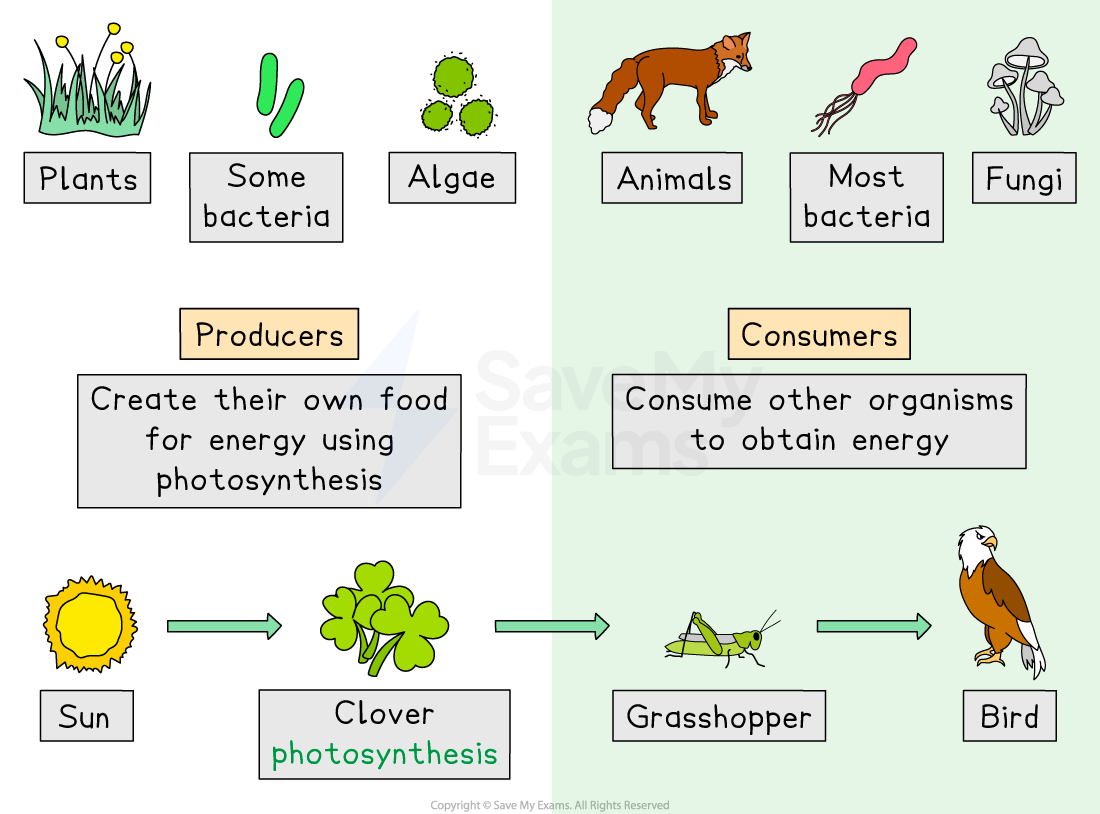
Examiner Tips and Tricks
Remember all living organisms require nutrition. Some organisms, like plants, make their own food, while others, like animals and fungi, must consume (take in) food to obtain nutrients.
Respiration
Respiration is a chemical process carried out in all living organisms
Energy is released from glucose either in the presence of oxygen (aerobic respiration) or the absence of oxygen (anaerobic respiration)
The reactions ultimately result in the production of carbon dioxide and water as waste products
Energy is transferred in the form of ATP

The equation for aerobic respiration
Examiner Tips and Tricks
Make sure not to confuse respiration with gas exchange. Gas exchange involves getting oxygen into the cells and carbon dioxide out. Respiration uses the oxygen supplied from gas exchange to release energy in the form of ATP.
Excretion
Chemical reactions that take place inside living cells are described as metabolic reactions
Metabolic reactions produce waste products, some of which may be toxic
These toxic products must be eliminated from the body
Excretion is the removal of toxic materials and substances from organisms
Excretion in animals
Waste products excreted by animals include:
Carbon dioxide from aerobic respiration
Water from aerobic respiration and other chemical reactions
Urea which contains nitrogen resulting from the breakdown of proteins
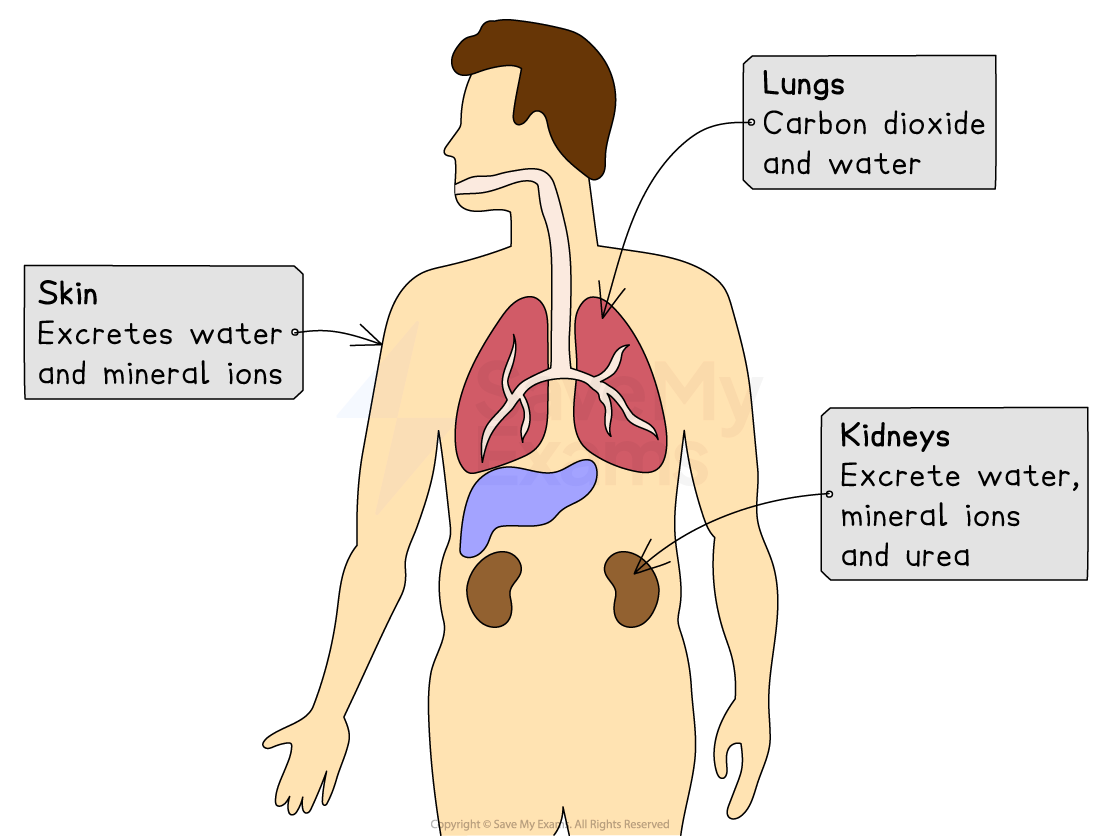
Excretion in plants
Waste products excreted by plants include:
Oxygen from photosynthesis
Carbon dioxide from respiration
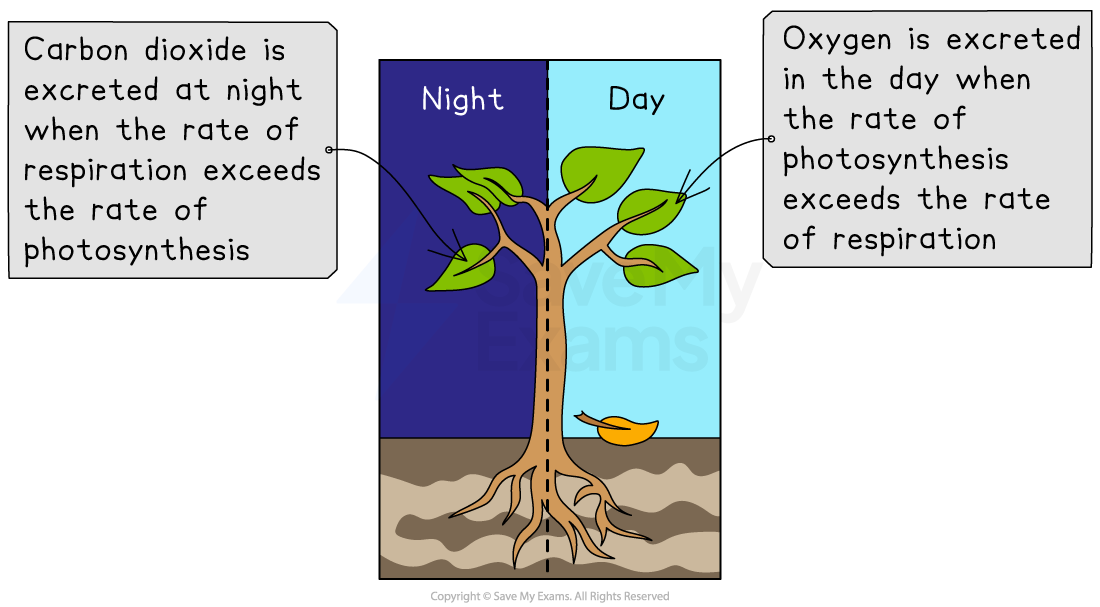
Examiner Tips and Tricks
Excretion is often confused with egestion. Remember that the waste products removed through excretion have originated from chemical reactions in the cells. However, the waste products produced in egestion are in the form of faeces and originate from the remains of the substances not absorbed during digestion.
Response to Surroundings
The sensitivity of an organism refers to its ability to detect and respond to stimuli in its surroundings
Responding to the environment around them gives an organism the best chances of survival
Sensitivity responses in animals
In humans, the nervous system provides a complex system of receptors, neurones and effectors which detect and respond to different stimuli using electrical impulses
The endocrine system also allows a response to stimuli using chemical messengers, which travel in the blood, called hormones
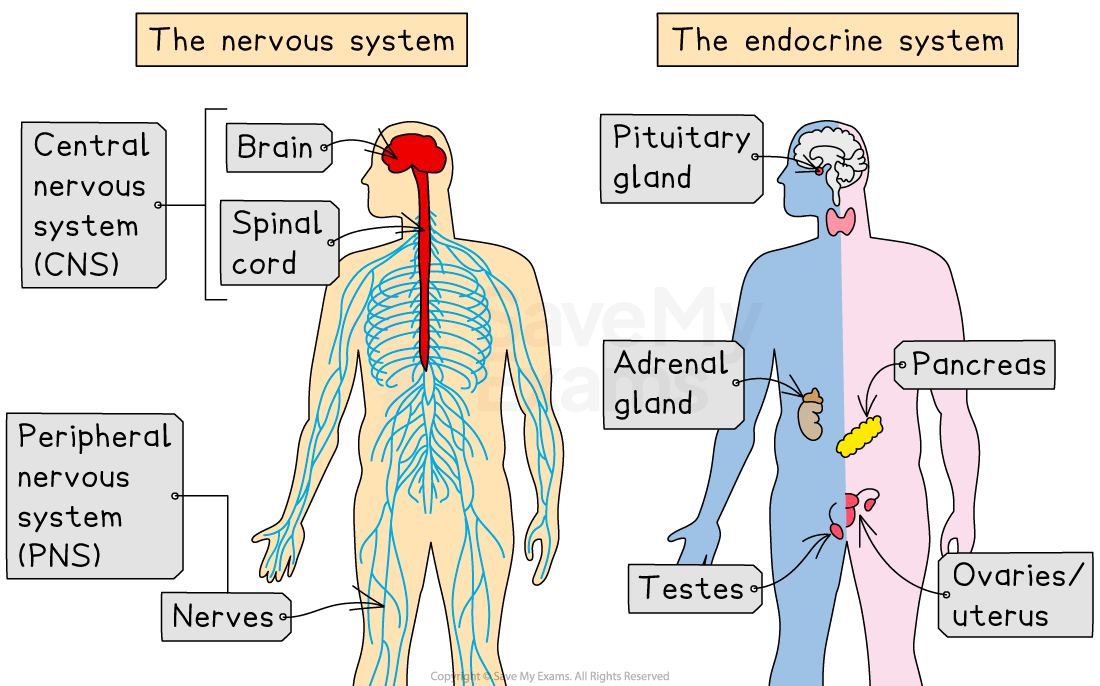
Sensitivity responses in plants
In plants, responses are controlled by chemicals and are usually much slower
Geotropism describes a plants response to gravity which causes the roots to grow down into the soil
Phototropism describes a plants response to light which causes shoots to grow towards sunlight

Phototropism and geotropism allow plants to respond to their environment.
Movement
Movement is an action by an organism causing a change of position or place
The movement of an organism from place to place is called locomotion
Plants cannot move from place to place but can change their orientation
For example, sunflowers track the sun and so change their orientation throughout the day

Sunflowers track the sun throughout the day.
Control
Living organisms must control their internal environment in order to keep conditions within required limits
This is called homeostasis
Homeostasis in humans
Thermoregulation refers to the control of body temperature
The optimum human body temperature is 37°C
If body temperature increases e.g. during exercise, mechanisms for control will be initiated to return the temperature back to the optimum
Mechanisms include sweating or vasodilation

Thermoregulation is an example of homeostasis required to maintain a body temperature of 37°C.
Another homeostatic mechanism in humans is osmoregulation (control of water levels)
Homeostasis in plants
Plants use transpiration to maintain a suitable temperature
Water evaporates from the stomata on the underside of the leaf, leading to heat loss

Plants maintain an optimum temperature through transpiration.
Reproduction
Reproduction is the process that leads to the production of more of the same kind of organism
Reproduction is fundamental to the survival of a population and ultimately, the species
There are different types of reproduction: sexual and asexual
Sexual reproduction
In this type of reproduction, the male and female gametes fuse together
In humans, the male gamete is the sperm and the female gamete is the egg
In plants, the male gamete is in the pollen grains and the female gamete is the ovule
The DNA of the offspring is composed of both maternal and paternal DNA

Sexual reproduction involves the fusing of two gametes to form a zygote that contains DNA from both parents.
Asexual reproduction
Cells or whole organisms can also reproduce using asexual reproduction
Mitosis is an example of asexual reproduction
There is only one parent involved so an exact clone is produced
The DNA of offspring is identical to parental DNA
Plants can reproduce asexually naturally by runners or artificially by the taking of cuttings
Single-celled organisms such as bacteria or protoctist amoeba reproduce asexually
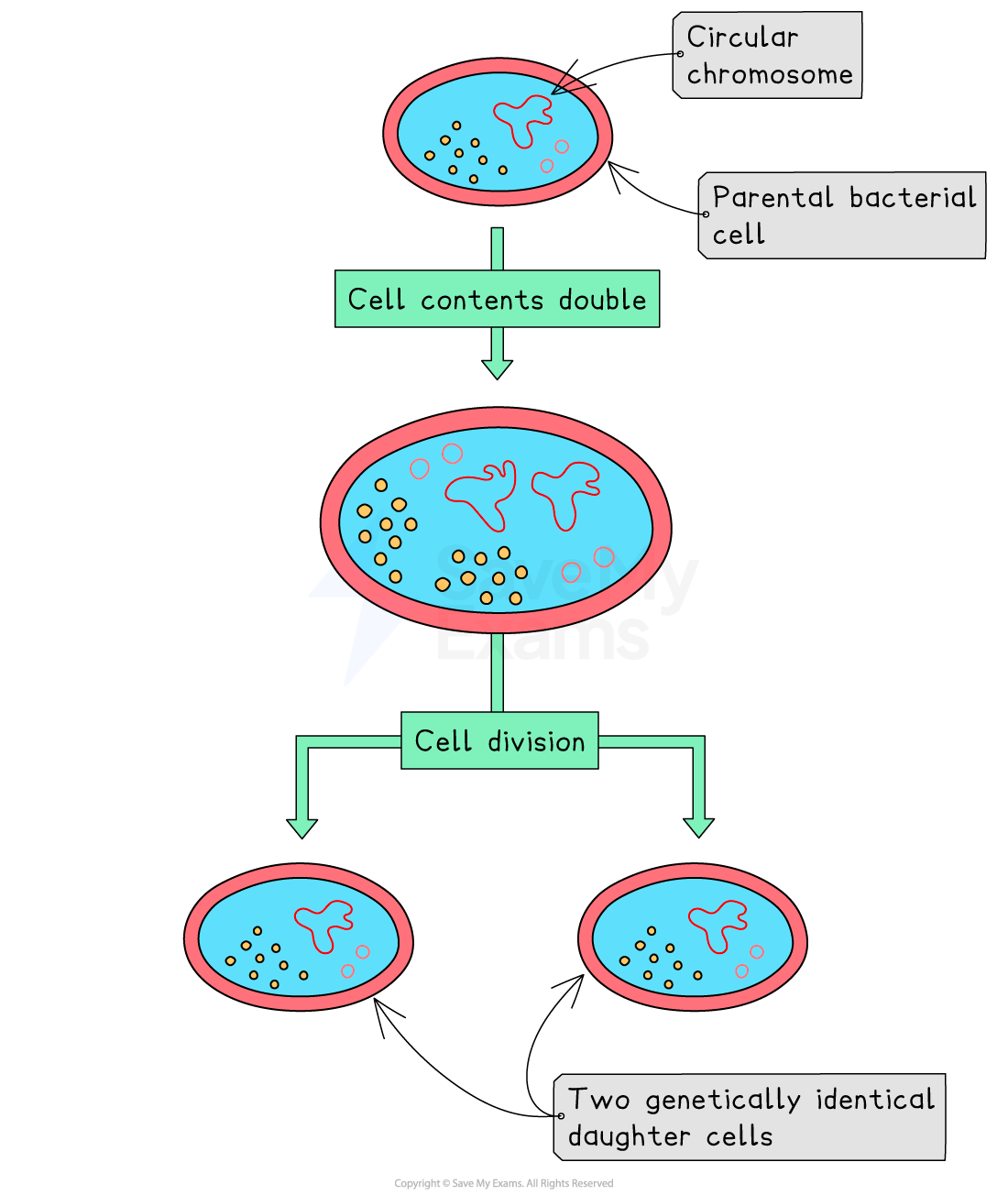
Growth
Growth is defined as a permanent increase in size
In animals, an individual grows larger between the zygote and adult stage with changes in proportion or shape
In plants, an individual grows larger throughout their whole life with new shoots, leaves, branches etc. forming year after year

Unlock more, it's free!
Did this page help you?